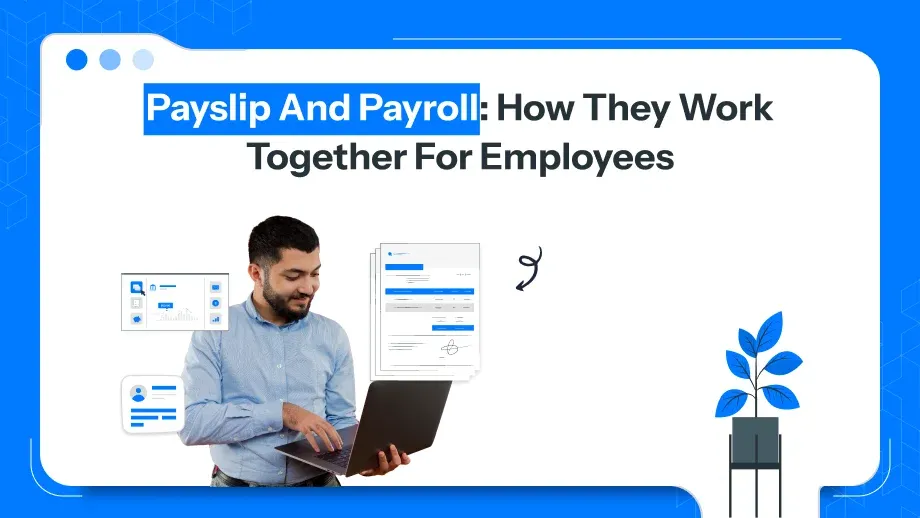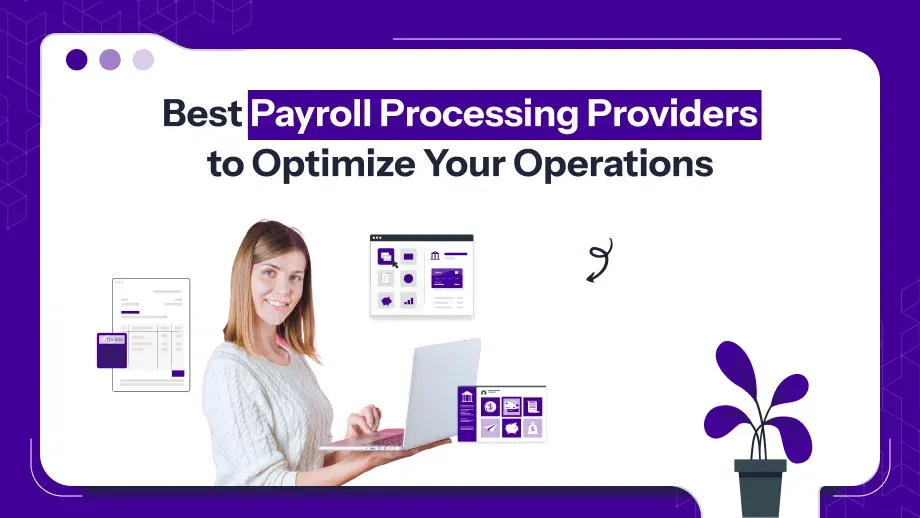Transparency in payroll practices leads to increased trust among the employees and employers. If the employees are clearly explained the pay stub and their pay schedules and deductions are communicated, then it shows the compensation calculation.
Grab a chance to avail 6 Months of Performance Module for FREE
Book a free demo session & learn more about it!
-
Will customized solution for your needs
-
Empowering users with user-friendly features
-
Driving success across diverse industries, everywhere.
Grab a chance to avail 6 Months of Performance Module for FREE
Book a free demo session & learn more about it!
Superworks
Modern HR Workplace
Your Partner in the entire Employee Life Cycle
From recruitment to retirement manage every stage of employee lifecycle with ease.


Seamless onboarding & offboarding
Automated compliance & payroll
Track performance & engagement
Best Payroll Practice for Accurate Employee Payments
- payroll process best practices
- 14 min read
- December 27, 2024

One of the foundations of effective payroll administration is the accurate payment of employees. Maintaining accurate and current staff data is the first step towards achieving reliability. This includes personal details, hours worked, salary or wage rates, bonuses, deductions, and benefits. A centralized system for storing this data ensures consistency and reduces errors during payroll processing. Further reducing the risk of human error is through payroll automation by using reliable payroll software. Each employee would then receive correct compensation based on his or her contract and work hours.
Another essential payroll practice is regular auditing and cross-checking of payroll data before processing payments. By doing routine reviews, businesses can catch discrepancies early such as overpayments, underpayments, or incorrect deductions. This proactive approach will not only help prevent errors but also ensure that the tax calculations and benefit contributions are accurately deducted. Furthermore, a clear payroll schedule set and deadlines followed is essential for timely payments. Timely payroll processing will instill trust among the employees and ensure compliance with labor laws, thus making it possible to have a positive workplace.
- What are payroll practices?
- Why Payroll Practices Matter?
- Key Payroll Practices for Your Business
- Advantages of Best Payroll Practices
- How to Improve Your Payroll Practices?
- Things to Consider in Payroll Practices
- 1. Timeliness and Consistency
- 2. Information about Employees
- 3. Payroll Taxes and Deductions
- 4. Payroll Software and Automation
- 5. Employee Pay Methods
- 6. Records and Reporting
- 7. Labor Laws
- 8. Benefits Administration
- 9. Correct errors or discrepancies in payroll
- 10. Employee access to payroll information
- 11. Regular Payroll Audits
- 12. Payroll for Temporary and Seasonal Workers
- Conclusion
What are payroll practices?
Payroll practices are simply the methods and policies a company uses in running and managing employee compensation, taxes and deductions. Determination of benefits and salaries as well as ensuring that the levies are deducted and paid correctly are also part of an effective payroll management. Beyond just paying employees, managing payroll also includes recordkeeping, pay transparency, compliance with local, state and federal laws.
Good payroll practice can keep businesses from the usual mistakes of delayed payments, miscalculation of tax, and disputes among employees. Payroll, when done right, keeps employees happy and guards your company against costly fines and other legal issues.
Why Payroll Practices Matter?
Accuracy and Compliance
Proper processing of payroll practical questions is important for various reasons. First and foremost, accurate and timely payment to employees builds a sense of trust within the organization. Second, ensuring compliance with tax laws and labor regulations will avoid any costly penalties and audits; incorrect calculations, missing deadlines, or failure to withhold the right amount of tax leads to fines or other legal implications.
Efficiency and Time Savings
Efficient payroll practices save time and resources. All these factors result in the automation of the payroll process, with calculation, report generation, and electronic data storage minimizing all manual work and chances of human error. Payroll teams can then focus on strategic activities of HR, such as talent management and employee development, instead of getting bogged down by repetitive payroll tasks.
Employee Satisfaction
Accurate and timely payments are something that employees depend on. The more a payroll is processed correctly and on time, the higher the chances that employees feel valued and engaged. Pay stubs, direct deposit options, and easy access to payroll records can really bring the employer and employee into a good relationship. When the employees are happy, they will stay in your company and reduce turnover, which ultimately enhances productivity.
Key Payroll Practices for Your Business
1. Maintaining Accurate Records
Maintaining detailed records that are accurate is probably one of the most significant payroll practices. These are all the employee personal data, hours worked, salaries/ wages, deductions, and fringe benefits. Proper documentation enables your payroll to be carried out correctly and ensures compliance with tax filing and audit requirements.
2. Automate Your Payroll Processes
Payroll automation is a lifeline for many businesses. Manual payroll processing is tiring and error-prone. You can automate tasks like wage computations, tax withholdings, and benefit deductions using payroll software. It reduces mistakes and saves time, therefore enabling you to process payrolls faster and more correctly.
3. Tax compliance
An essential part of your payroll practice is tax compliance. It is constantly required to be updated for different tax rates and rules; therefore, having the most recent update would be wise. Such will include federal, state, and local taxes along with social security and Medicare. Failure to meet the timelines or the wrong amount could attract some penalties. Regular reviews of tax regulations and the advice from professionals can be considered an essential measure to avoid all tax-related issues.
4. Proper Schedule for Payroll
Plan your payroll schedule to match employees’ expectations. Whatever you choose, be it a weekly, bi-weekly, or a monthly pay schedule, a regular routine would help employees budget well, and you would not miss meeting deadlines for payroll. Furthermore, when you have a predetermined payroll schedule for tax filing and contribution of benefits, your company stays compliant with the set requirements of the government.
5. Regular Payroll Audits
Regular payroll audits will catch errors before they become problems. Payroll data review for errors in pay rates, missed deductions, or overpayments can save your business from costly mistakes. Audits also ensure compliance with wage and hour laws, preventing potential lawsuits or fines.
Advantages of Best Payroll Practices
1. Minimized Chances of Mistakes
Through payroll best practices and automated systems, businesses can minimize the chances of mistakes such as wrong tax filings, late payments, or employee misclassifications to a great extent. This saves money and protects your company’s reputation.
2. Productivity
When payroll practice processes are accurate and error-free, the human resource and payroll teams can direct their attention to other pertinent activities, like employee development, engagement, and productivity. When routine payroll tasks are automated, the team is better in managing their time and available resources.
3. Legal Compliance
Effective payroll practices ensure compliance with both federal, state, and local regulation. It keeps track of changing laws and maintains up-to-date payroll records to prevent legal issues and costly fines, thus providing peace of mind for growth rather than worrying about pitfall compliance.
4. Effective Employee Retention
Accurate and timely payments create trust and ensure high employee satisfaction. When the employees are confident that the payroll is being managed accurately, they tend to stick to the company, and the turnover rate is reduced while a positive workplace culture prevails.
How to Improve Your Payroll Practices?
Payroll best practices are essential to running an efficient business, happy staff, and avoiding any violations of the law. Reducing errors and saving so much time means reducing losses due to costly penalties as well. The following paper will discuss some key ideas on how to enhance the payroll practices and make it much simpler.
1. Automation Process of Payroll
A lot of payroll practices can easily be improved by automating your payroll process. Manual payrolls are time consuming; these could also be prone to mistakes due to human error. Payroll automation software facilitates the calculation of wages and tracking of hours worked within a company. It aids them in managing tax withholdings more accurately. Automation does away with mistakes that are likely to cause overpaying, underpaying, or incorrect tax filings.
2. Continuous Review and Update of Employees’ Information
Accurate employee information forms the basis of accurate payroll processing. Outdated or wrong employee information about tax filing status, benefits enrollment, or compensation can result in payroll errors. Updating and reviewing the employee information periodically ensures that your payroll system is up to date and reduces the chances of error in payments processing.
3. Maintain Compliance with Tax Laws and Regulations
Tax compliance and payroll best practices is an important factor in payroll management. In the payroll, there is a lot of legal compliance such as federal and state income tax, Social Security, Medicare, and unemployment insurance for the contributions. Compliance would not only protect your firm from being penalized, but also file the tax of employees accurately.
4. Implement clear payroll schedules
Ensuring an even and transparent payroll schedule helps to enhance the payroll system. Regular paychecks are always expected by employees, and when they are not received in time, it causes annoyance, low morale, and even a decline in faith in the business. Consistency is essential to managing expectations and keeping employees met, regardless of whether your business processes payroll on a weekly, every two weeks, semi-monthly, or monthly basis.
5. Invest in Employee Self-Service Portals
Through self-service portals, employees can simply check their pay information by themselves, such as a pay stub, tax form, or leave balance. That helps increase transparency and relieve an otherwise massive load from the HR department’s back. With the possibility of checking payroll details through individual inquiry, you save your payroll inquiries and consequently reduce payroll-related inquiries to your HR.
6. Payroll Audit
Regular payroll best practices audits help detect possible mistakes and ensure your payroll is working properly. Payroll process auditing allows you to detect errors like improper wage rate, omitted deductions, and unauthorized overtime. Through regular auditing, you address the problem before it develops into a huge issue.
7. Outsource Payroll Management
Outsourcing payroll to a reliable provider can be a game-changer for businesses that don’t have the time, expertise, or resources to manage payroll in-house. Payroll service providers specialize in handling payroll processing, tax compliance, and regulatory updates, reducing the burden on your internal team.
8. Train Your Payroll Team
Finally, the most critical factor for improving payroll practices is the training of your payroll team. The proper training of staff is important in ensuring that payroll is processed accurately and efficiently. They should be well conversant with current payroll laws, company policies, and the payroll system in use.
Things to Consider in Payroll Practices
When it comes to controlling a company’s payroll, several factors have to be very conscious because payment has to be effected with accuracy and within the stipulated law. Bad practices with regard to payroll may lead to inaccuracies, dissatisfaction, fines at law, and the degradation of a company’s good name. To avoid such issues, best practices should be maintained, and payroll processing should be as efficient and accurate as possible.
1. Timeliness and Consistency
Payroll processing should be timely not only for convenience but also for legal reasons in many places. Morale among workers may suffer and fines may be imposed for late payments.Workers should be informed of and accustomed to regular payroll timetables, such as weekly, biweekly, or monthly. Businesses must be aware of the statutory dates for filing tax returns and making payments in order to prevent penalties and lawsuits.
2. Information about Employees
Data for the payroll practice should accurately be captured to allow appropriate payment, calculation of tax payable, and benefits to employees. The presence of any data errors regarding employees’ records will cause overpaid, underpaid wages, improper tax, and errors concerning deductions. The employee record also involves keeping track of all tax status, pay rates, and bank details. Employees also need to be updated immediately if any change happens, such as an address or banking detail change to avoid payroll discrepancies. It is also essential to correctly classify employees as full-time, part-time, exempt, or non-exempt, which determines pay rates and benefits.
3. Payroll Taxes and Deductions
Inaccurate tax calculations or missed deductions can lead to penalties from tax authorities, employee dissatisfaction, and legal issues. The employer must ensure the correct payroll calculations of federal, state, and local taxes, including withholdings for Social Security, Medicare, and unemployment taxes. Employee contributions for health insurance and retirement plans must also be properly deducted. It requires knowledge of tax law changes to prevent tax compliance issues and calculates and remits all legal deductions, such as child support or garnishments, accurately.
4. Payroll Software and Automation
Automation greatly reduces human error, saves time, and generally makes payroll processes more efficient. Payroll processing through paper is more likely to be riddled with mistakes, which are costly to rectify. Investing in reliable payroll software, for instance, will streamline tax calculations, deductions, and benefits, among other payrolls. Payroll software should also be aligned with other HR systems including time-tracking and employee management tools to reduce data input errors. Automated payroll reports mean that tax filings, pay stubs, and wage reports are delivered on time.
5. Employee Pay Methods
Flexible pay methods increase employee satisfaction and ensure payments are made efficiently. The most efficient and secure method of paying employees is direct deposit, and companies should make sure all employees have access to it. For those who prefer receiving physical paychecks, businesses must process and distribute them in time. Payroll cards, which are prepaid debit cards, are a good alternative for employees without bank accounts. Also, the pay stubs shall clearly break down the amount paid before deductions and taxes while allowing employees to understand where they got that particular figure.
6. Records and Reporting
Documentation on audits, tax filing and dispute resolution regarding payroll cannot be accomplished without the proper documentations. Keeping accurate documents of information related to payroll, allows the right information that the business organization needs immediately.
Businesses must hold more detailed records of rates, hours, taxes paid and benefits received by employee workers. There must be regular payroll reports in the form of earnings reports and tax filings to be checked within the organization and against any possible litigation or audit.
7. Labor Laws
Payroll process best practices must adhere to all federal, state, and local labor laws.Minimum wage, overtime pay, and benefits laws fall into these. If these are not observed, a company may face litigations, fines, and damages to the reputation of the business. It is very important for the company to make sure that it pays at least the minimum wage requirement by law and this usually depends on the state where they operate. Overtime must be properly computed for non-exempt employees.
8. Benefits Administration
Benefits are part of employee compensation packages, and management mistakes may lead to dissatisfaction and legal concerns. Health insurance, retirement plans, and flexible spending accounts are examples of employee benefit management. Benefits eligibility dates would be monitored because employees meet specific requirements before they get qualified. Businesses also had to manage open enrollment efficiently enough so that employees understand choices clearly.
9. Correct errors or discrepancies in payroll
Payroll errors can lead to serious consequences, including employee dissatisfaction and potential legal issues. When errors are identified, businesses should address them promptly by issuing corrected paychecks, adjusting deductions, or submitting amended tax filings. Open communication with employees is essential to keep them informed about discrepancies and the resolution process. Documenting all payroll errors and their resolutions is crucial, particularly in the case of significant mistakes, to protect against future legal claims.
10. Employee access to payroll information
Payroll transparency is essential in establishing trust and ensuring that the employee feels comfortable with his pay. The employees will be able to retrieve the pay stubs, tax forms, and benefit information through a self-service portal. Pay stubs must indicate gross pay, deductions, taxes, and bonuses to the employee so that they will understand how their pay has been calculated.
11. Regular Payroll Audits
Periodical payroll audits can ensure payroll practices are being followed right and no mistakes or fraud practices exist. Businesses must make it a point to carry internal audits to identify any deviations or inaptness in payroll processing. External audits through some agencies can also prove to be beneficial for major organizations in ensuring that their payroll systems are tax law compliant and all other compliances are in place.
12. Payroll for Temporary and Seasonal Workers
Payroll administration for contract, short-term, and seasonal staff members differs slightly from that of full-time staff members. For hourly workers, working hours need to be accurately recorded, while for temporary or contract staff, proper classification is necessary. Terms for short-term employees in payroll should be well-defined, including payment schedules, eligibility for benefits, and tax withholding responsibilities.
Conclusion
Effective payroll practice can be considered the foundation upon which a productive, compliant, and motivated workforce operates. By following best practices, such as timeliness, accuracy, and observance of tax laws, businesses can avoid costly errors, build employee trust, and protect themselves from legal risks. Timely payments, proper tax withholdings, and clear pay structures are imperative for maintaining employee satisfaction and loyalty. Furthermore, employing technology through payroll software and automation can make processes smoother and reduce human error, not to mention compliance with regulatory requirements. There are also regular audits, types of payroll system, transparent communication, and proper handling of the information of employees to enhance efficiency in payroll practices.
FAQs
Why is transparency necessary in payroll practice?
How can payroll practice promote business growth?
Well-managed payroll practices can support business growth by ensuring that employees are paid fairly and on time, thereby minimizing the risks of legal disputes and also enabling the business to scale by streamlining administrative tasks with efficient payroll systems.
What role do payroll audits play in payroll practice?
Payroll audits are important in practices of payroll to detect inaccuracies, ensure compliance with the law, and thus prevent fraudulent activities. Most businesses ensure accuracy, help improve payroll efficiency, and protect against legal and monetary risks through regular audits.
What is the role of automation in payroll practices?
Automation in payroll practice reduces human error, efficiency, and compliance by calculating taxes, deductions, and generating reports automatically. It reduces manual workloads and ensures accurate and timely processing of payroll.
How can businesses improve their payroll practices?
To enhance payroll practices, a company can automate payroll processing with reliable software, conduct frequent audits, update employee information promptly, and keep abreast of changes in tax laws. Communication to employees about payroll schedules and deductions also helps avoid confusion.


